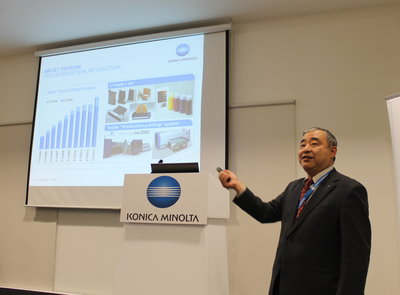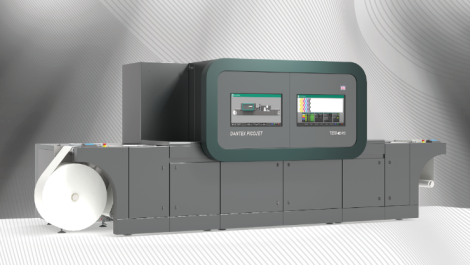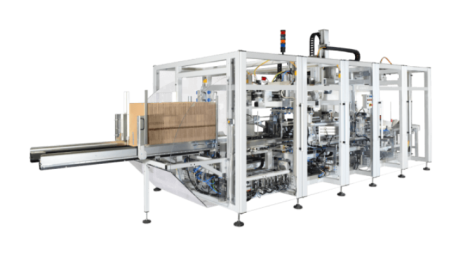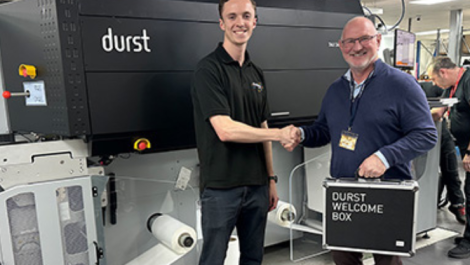Akiyoshi Ohno, executive officer, division director of the inkjet business unit, explained the company’s commitment to digital
As the biggest exhibitor at the show, Konica Minolta’s presence at Ipex was hard to ignore, not just due to the fetching bowler hats that the company was handing out to visitors. The vast stand had no fewer than 12 systems running live covering commercial production, packaging, wide format, document printing, corporate, on-demand publishing, direct mail, labels and photo-printing markets.
Promising to revolutionise short run variable data jobs with short lead times, Konica Minolta together with Komori are aiming to fully launch the KM-1 B2 inkjet press at the end of 2015. The sheetfed UV colour digital press was on show at Ipex where KM gave an update on progress and development.
As well as a host of commercial print applications, the press can produce ‘light’ packaging applications at speeds up to 3,300 per hour. This gives commercial printers the opportunity to expand their reach and get into the still growing packaging market.
‘As the first of its kind in the market place, the KM-1 is ground-breaking technology for production print environments,’ said Olaf Lorenz, general manager, international marketing division, Konica Minolta Business Solutions Europe GmbH.
‘The design concept of the KM-1 is to minimise downtime and loss of earnings whilst fitting smoothly into the existing workflow,’ explained Akiyoshi Ohno, executive officer, division director of the inkjet business unit.
Also among the systems running on the stand was the new bizhub C70RLC label machine, which was first seen as a prototype at Labelexpo in 2013. The four colour roll-to-roll press is aimed at the space between entry-level desktop presses and full production systems, and runs at 18 m/min. This is KM’s first foray into the label market and it is due for commercial release at the end of this year. Offering a print resolution of 1,200 x 1,200 dpi, it features an inline laser-cutting system and can print on substrates between 60 and 250 microns.
At the press conference, Mr Lorenz, stated, ‘The classical digital business from commercial and industrial printers is moving from analogue to digital – with numerous opportunities from which additional business can be generated. While the offset market still covers €107 billion of revenue, digital only covers €7.7 billion. Digital colour print is set to experience a compound annual growth rate of about 4% until 2017. With this knowledge, Konica Minolta decided to expand its reach into new markets and increase its product portfolio, as we are committed to the printing industry and convinced it has a bright future.’






